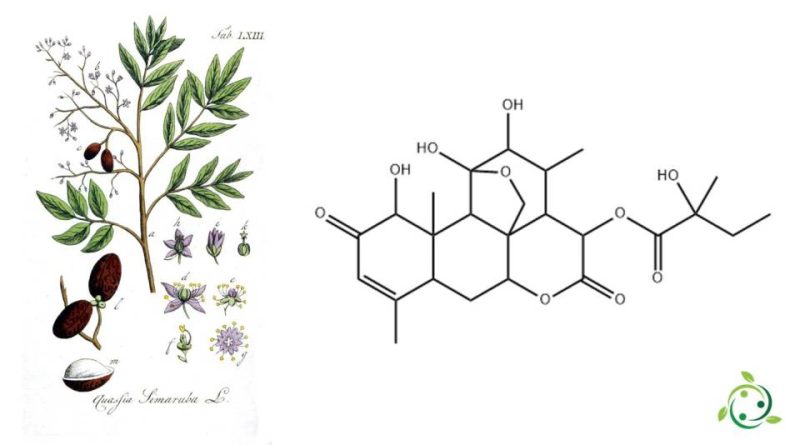Glaucarubinone
Glaucarubinone
Glaucarubinone, whose term in the official IUPAC nomenclature is: [(1S, 4R, 5R, 6R, 7S, 8R, 11R, 13S, 17S, 18S, 19R) -4,5,17-trihydroxy-6,14,18 -trimethyl-9,16-dioxo-3,10-dioxapentacyclo [9.8.0.01,7.04,19.013,18] nonadec-14-en-8-yl] (2S) -2-hydroxy-2-methylbutanoate is a quassinoid with brute or molecular formula: C25H34O10.
Glaucarubinone is a substance of isolated origin from different plant species and has anticancer and antimalarial properties. It has a role of geroprotector, plant metabolite, antineoplastic and antimalarial agent.
Glaucarubinone is a carboxylic ester, a heteropentacyclic organic compound, a tetrol, a secondary alpha-hydroxyketone, and a tertiary alpha-hydroxyketone.
This natural molecule is found in Simarouba amara, Quassia undulata and other plant species where it has been found to date.
Laboratory research has shown that glaucarubinone inhibits the growth of pancreatic cancer by down-regulation of PAK1. In fact, studies have been carried out to investigate the effect of glaucarubinone on CRC growth and metastasis and the mechanism involved. Cell proliferation was measured in vitro by incorporation of [3H] -thymidine and in vivo by volume of tumor xenografts. From these studies it emerged that glaucarubinone has interesting and promising properties in the proliferation of cancer cells.
Warning: The information shown is not medical advice and may not be accurate. The contents are for illustrative purposes only and do not replace medical advice.

